The 218 of China Academy of Art
- Project created by China Academy of Art, Peng Zhe,
- won 2022, Silver
- from Soft Decoration
The Nanshan Campus of the China Academy of Art is a place of traditional humanism and natural flavor. Its ink charm of indigo bricks and tiles, and light white stone pillars reflect the humanistic qualities in the Southern area of the Yangtze River. The magnificent cultural square creates a unique cultural atmosphere for Nanshan Campus through the spatial design approach of operation and open-eyesight.
Based on the architectural style of the campus, this case takes ink as the keynote, metal grilles, wood, and landscape rock panels as the main elements to forge an integrated design symbol of traditional culture and modern architectural style.
Donald Judd believed that art should not be representational: the work should exist as an independent object in its own right. He hopes that those who visit art exhibitions could concentrate entirely on the objects.
The design is rooted in the local culture, drawing from the rocks, flowers, and the West Lake Dragon Well tea. Also, the sculptures, floral art, and furnishings create a sense of literati elegance.
Visitors could touch each art-works and feel the story behind them.
The design of the lobby takes full advantage of the natural light, integrating perfectly with the interior. The cultural core spirit and the delicate modern technology are organically united by the bold collision of rock culture in classical Chinese Garden and the modern minimalist approach in the light-source series.
To emphasize the space order, the multi-function room is decorated with an array of soft furnishing in a simple, mono-material hard-furnishing atmosphere. The collision of natural floral art and stone rock slabs brings out the natural properties of wood and stone. The natural properties of the building material itself are restored over man-made creations. The immersive spatial structure is created within the rhythms of the East and the cultural symbols of the West, thus creating an infinite spiritual context in a limited space.
It is after the Cold Food Festival that tea sets can be dispensed. And then, tea leaves are readily available in the tea garden. After collection, it just needs to be steamed, mashed, and dried. Therefore, the seven wooden tools are all useless. “The Book of Tea” Lu Yu
When stepping into the tea room, you can enjoy the breeze and the moon. Besides, you can relax, sip, read or chat with friends there. And, the ideal side of the dweller can be seen in one cup of tea. The combination of the natural power and college life creates a unique rhythm of oriental culture with flexible and spiritual space.
In the meeting room, the natural light and shadows through the window not only enrich the vision but also break the heaviness and dullness of the space. The design of the stretch ceilings allows the sunlight to spill through the skylight, which creates a strong cultural presence.
The water-wave texture of the conference table presents the natural beauty and also echoes the scene outside. Moreover, it creates a sense of pure and quiet mood in the conference room.
As a whole, the design of the reception center adheres to the art concept of simplification and abstraction, for the sake of creating a moment of relief and peace in the fragrance of books and ink.

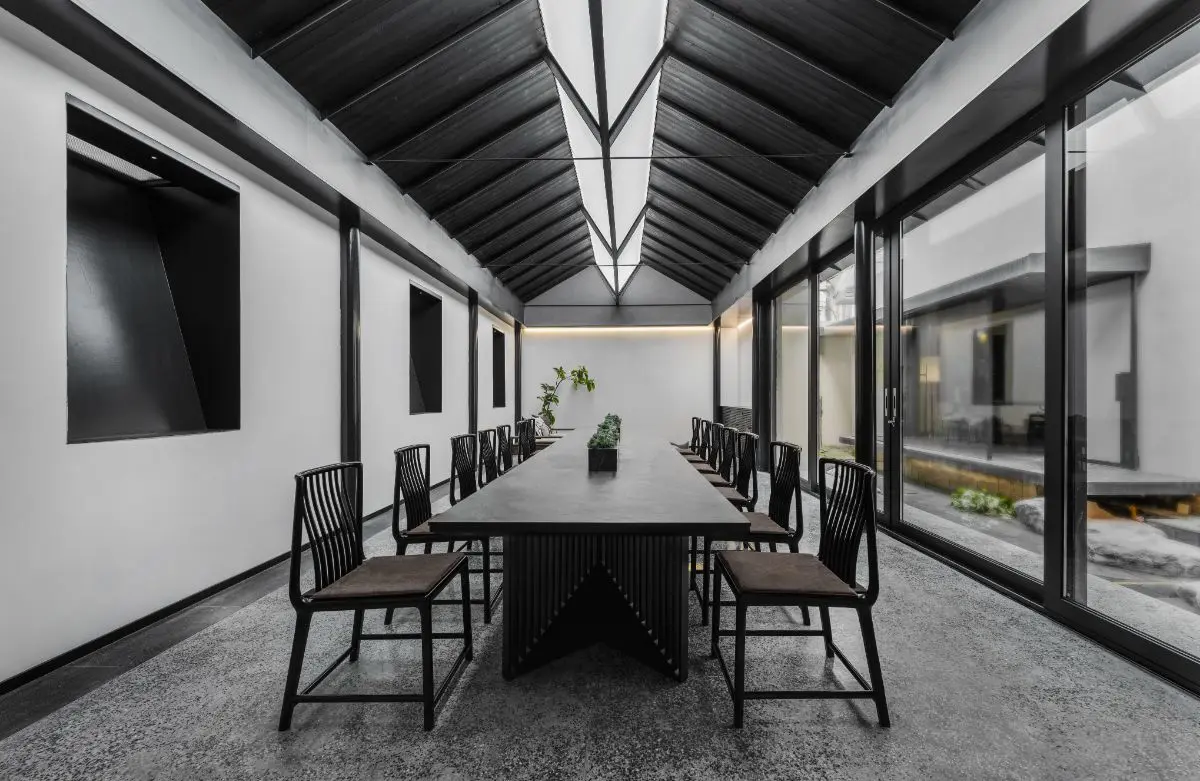
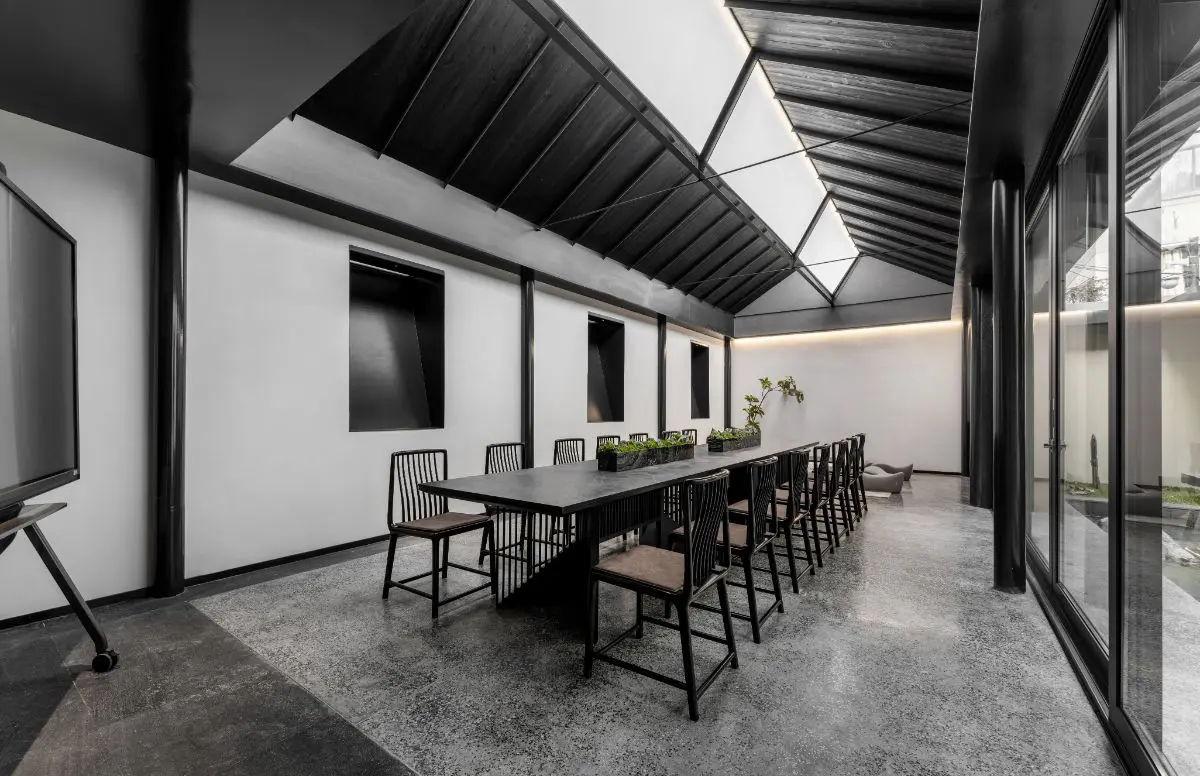


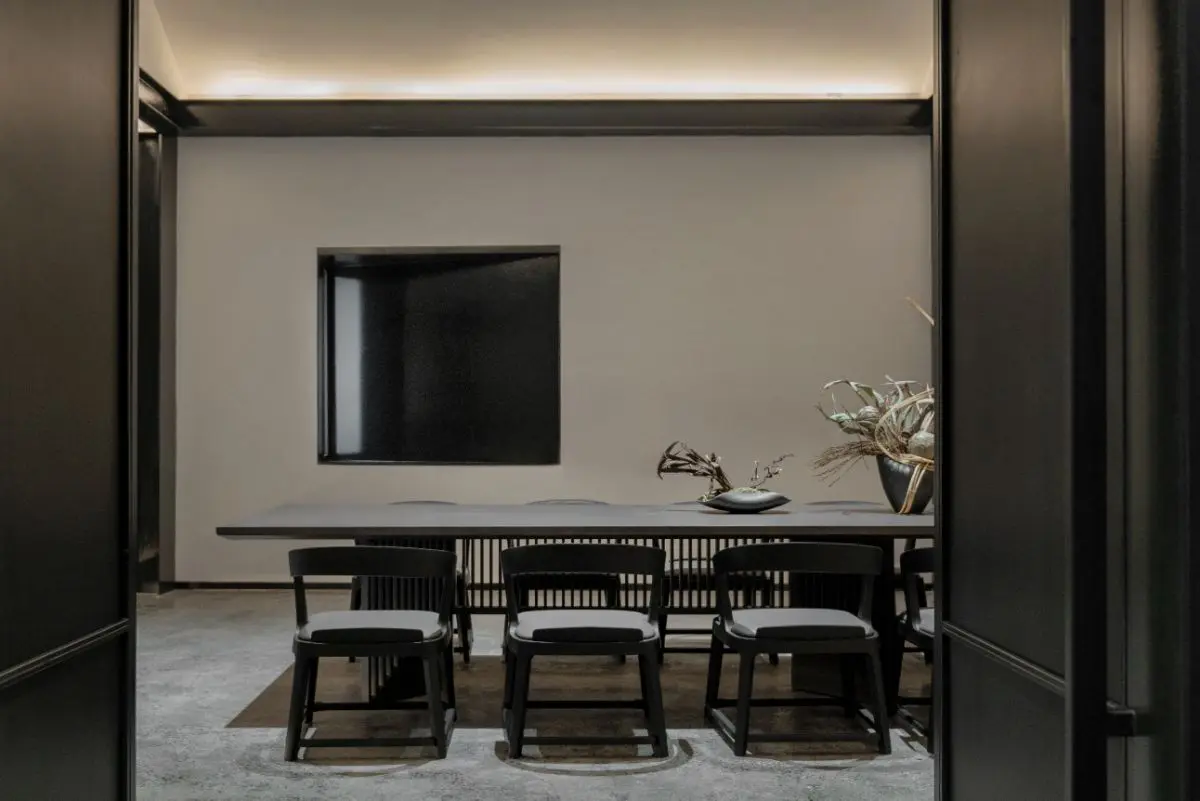

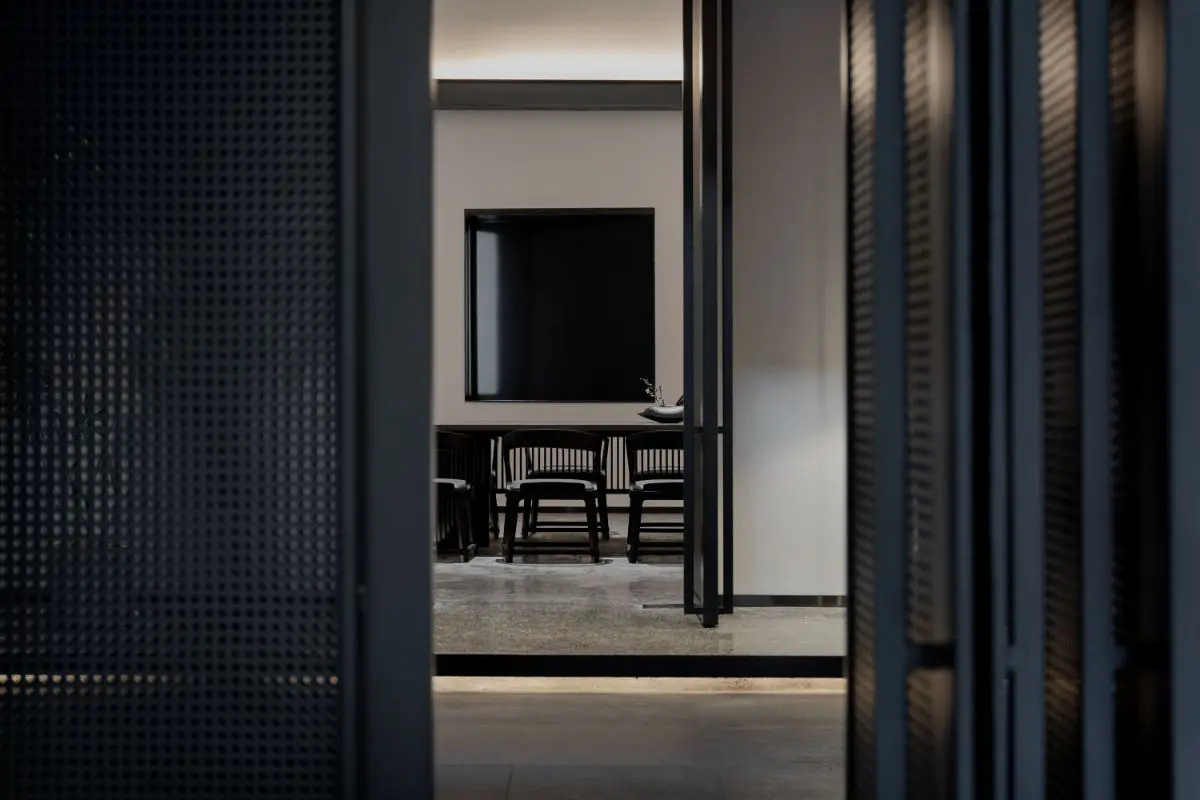
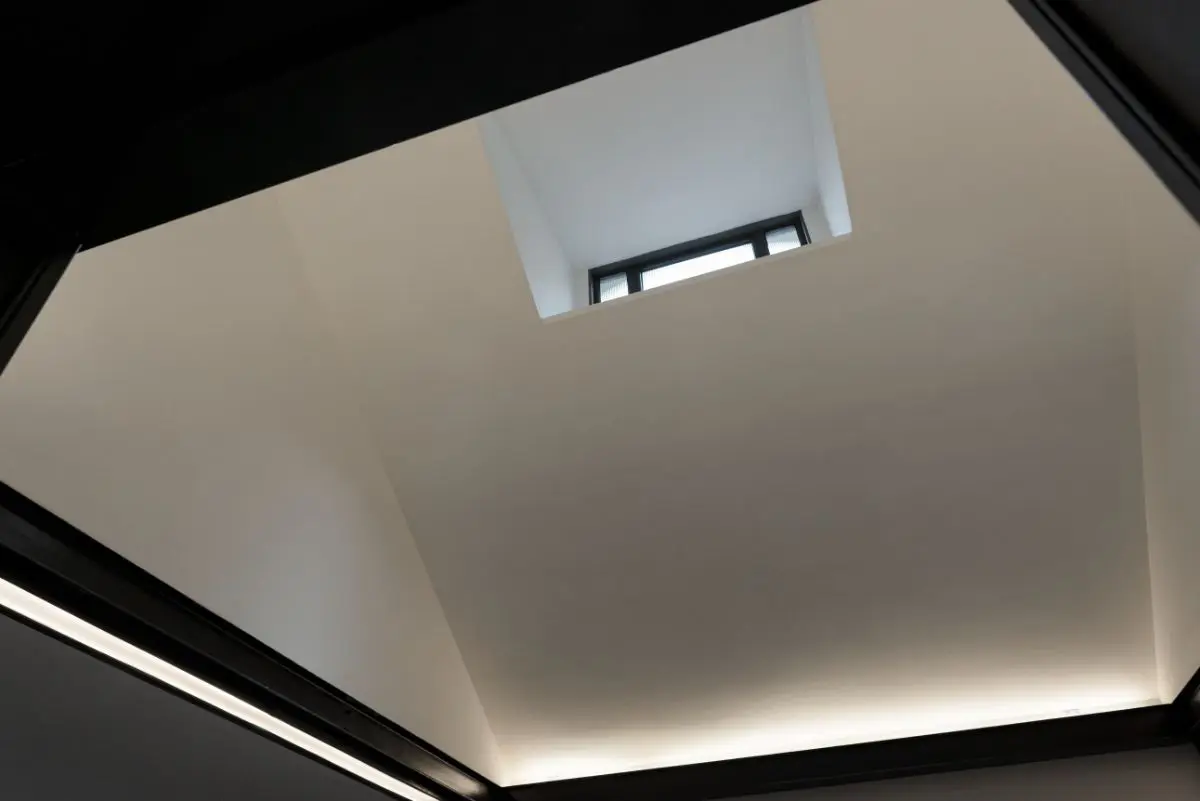









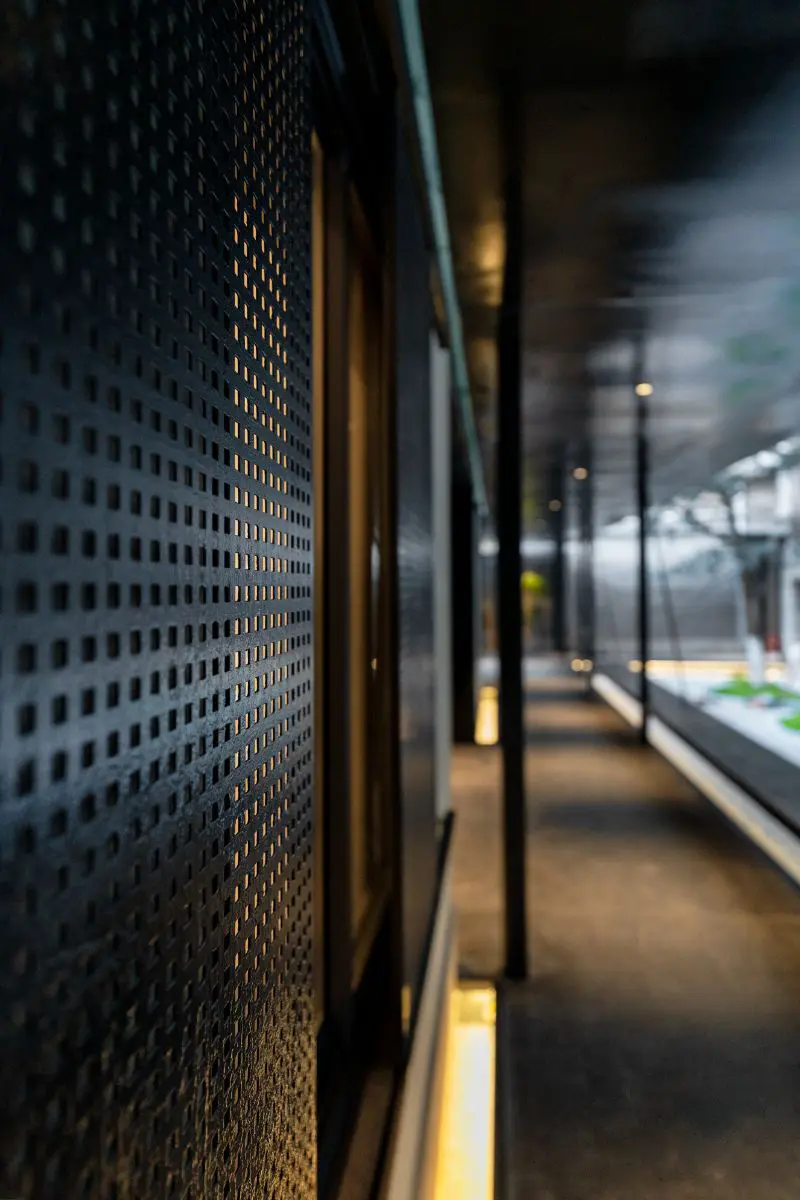
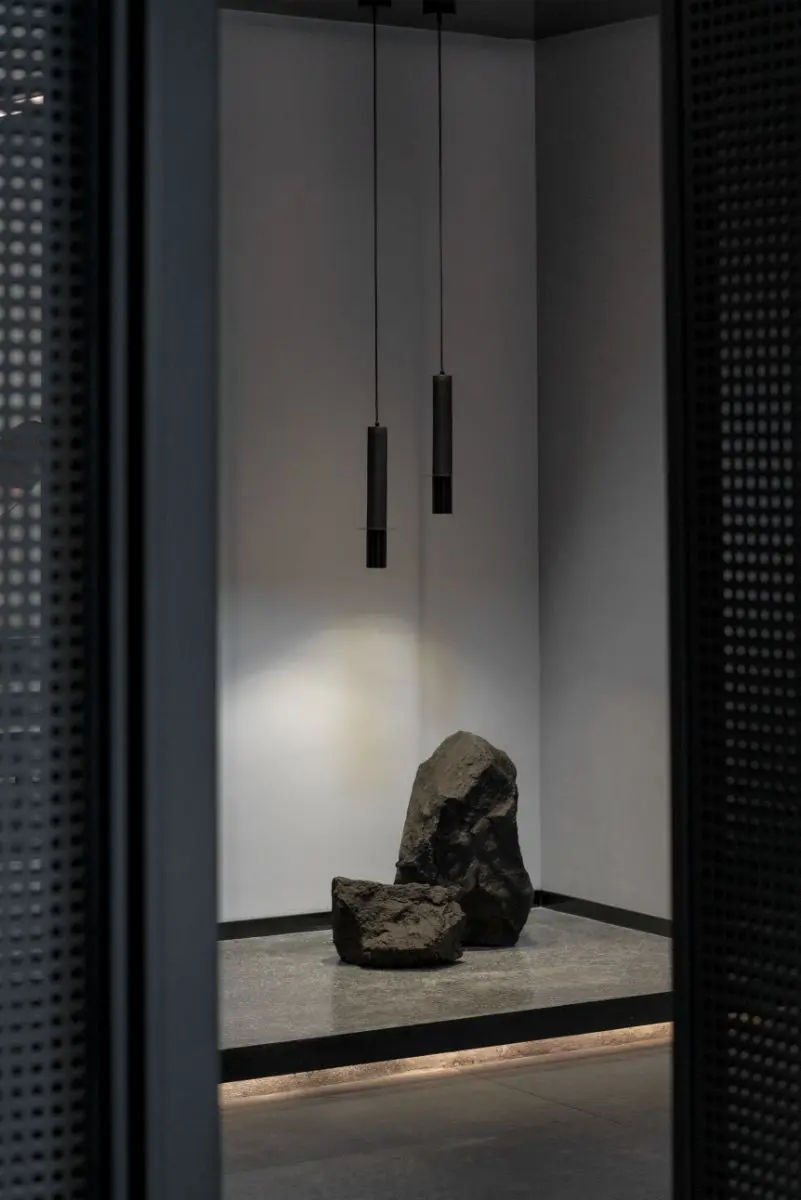


About China Academy of Art, Peng Zhe
Founded in 1928 as the first art academy with complete academic programs in China, China Academy of Art, undergoing changes in name and location, continues to yield outstanding achievements known both at home and abroad. CAA has experienced early hardship, ample maturity and leaping expansion as a vanguard in art. With a mission to revitalize Chinese art, it is in active dialogue with the world and has great influence in the development of modern and contemporary art in China.
Nowadays the academy has expanded its departments and academic teams and has garnered tremendous achievements in the school history. The infrastructure of CAA has improved in unprecedented ways. With Nanshan Campus being finished in 2003, and Xiangshan Campus being fully functional in 2007, covering an area of 1000 hectares and total space of 300,000 square meters, the academy now has three beautiful and well equipped campuses in the cities of Hangzhou and Shanghai.
Core Values
The serene views of the West Lake and the inviting vistas of the Xiangshan campus nurture the unique spirit of the academy, inspire a poetic dialogue between nature and mind, which also shaped the legacy of the academy. This peaceful natural environment beacons the individual to reflect and explore, to observe and to create. Thus, the spirit of China Academy of Art is not only composed of the picturesque landscape of the lakes and hills, but also of the minds and horizon of artists it fosters. The China Academy of Art has moved its campuses from Gushan Hill to Nanshan Hill and Xiangshan Hill. From hill to hill, conveying A strong sense of mission, A cultural responsibility and spirit, A poetic tradition linked with the hills and waters.
China Academy of Art has developed its unique multiple academic structure. Its fine arts major has been honoured the key discipline of the nation, while fine arts, art of design and art theory have been listed as three key provincial research bases of humanities.Also its majors such as art of design, film, architecture, television and broadcasting are listed as provincial key disciplines during the “11th Five Year Plan”; while architecture, drama and film, and public art are listed as provincial key disciplines during the “12th Five Year Plan”.
CAA now has 4 first standard doctoral programs, which are art theory, fine arts, design, drama and film. And has over 1200 graduate students.
About China Academy of Art, Peng Zhe
Peng Zhe
Associate Professor, Bachelor of Industrial Design, Master of Environmental Art, Doctor of Classical Chinese Philosophy and Art Theory, Senior visiting Scholar, Department of Architecture, Stuttgart Institute of Technology and Art, Germany.
The main research fields are life aesthetics scene design, furniture design, cultural and creative product design, and design ethics with “humanity” as the core.Related research achievements: In 2019, he presided over the Creation project of Tea Space Furniture — Song Yun of China National Art Foundation, and in 2020, he participated in the completion of the Youth research project of China National Social Science Foundation, Innovative and Activated Design of Bamboo Handicraft, and also participated in a number of national major, provincial and ministerial projects.
Exhibition Information:His works have participated in quality exhibitions at home and abroad and won awards. His representative works were selected in the 11th (2009), the 12th National Art Exhibition (2014), selected as the key creative case of “China Design Exhibition” sponsored by the Ministry of Culture and Tourism in 2019, and the 14th Zhejiang Art Exhibition and other academic exhibitions (2019).China Academy of Art Chinese Tea Exhibition (2018)
Awards: In the past 10 years, it has participated in China Furniture Expo, Dongguan Famous Home furnishing, Milan Furniture Exhibition satellite exhibition and other industry exhibitions and won awards, and won the first Chinese famous Furniture Jinyi Award “Gold Medal of Chinese Furniture Innovation” (2017), Shanghai Home Furnishing Expo Innovation Award (2016).The design achievements have nearly 100 patents and copyright certificates.It is collected by private museums and individuals.
Cooperative design cases have won more than 10 international cutting-edge design awards such as iF and RED-DOT in Germany.
